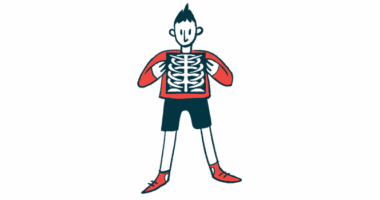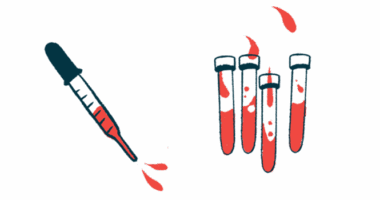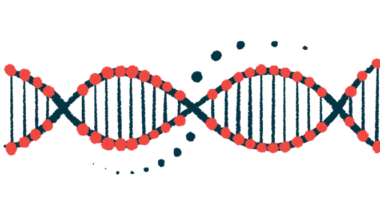
Orthopedic surgery for Gaucher disease
Last updated April 23, 2025, by Marisa Wexler, MS

Orthopedic surgery, or surgery to address bone and muscle problems, may sometimes be needed to manage bone complications in Gaucher disease.
The genetic disorder often leads to bone issues, such as weakened bones, bone pain, and joint damage. While starting Gaucher disease treatment early can often prevent or minimize these complications, orthopedic surgery can be required in some cases to manage bone problems that may still arise.
Bone and joint complications in Gaucher disease
An inherited condition, Gaucher disease is caused by mutations in the GBA1 gene, which causes fatty substances to build up inside certain cells. This ultimately drives damage to several organs and tissues, including the bones.
Bone and joint complications are some of the most common symptoms of Gaucher disease, and may include:
- bone pain, including severe episodes known as bone crises, due to reduced blood flow to the bones
- decreased bone density, which may be moderate (osteopenia) or more severe (osteoporosis), leading to weakened bones
- increased risk of bone fractures
- skeletal abnormalities, such as Erlenmeyer flask deformity, in which the extremities of certain long bones become abnormally widened
- osteonecrosis, also called avascular necrosis or bone infarction, or when blood supply to the bone is impaired and bone tissue starts to die and deteriorate, causing significant bone deformities.
In addition to impacting the bones directly, Gaucher disease also can affect the bone marrow — the spongy material inside bones where new blood cells are made. Bone marrow problems usually contribute to blood complications such as low blood cell counts. However, bone marrow involvement may in some cases also worsen skeletal problems.
Gaucher disease treatments, such as enzyme replacement therapy and substrate reduction therapy, can help improve bone mineral density, lower the frequency of bone crises, and prevent serious skeletal abnormalities in Gaucher disease. But even with treatment, some people may still develop complications that require orthopedic surgery.
What is orthopedic surgery?
Orthopedic surgery is a general term referring to procedures that aim to treat problems with the musculoskeletal system — the bones, muscles, joints, tendons, and ligaments.
Several types of orthopedic surgery may be used in people with Gaucher disease. Among them are:
- joint replacement surgery to address painful damaged joints
- spinal surgery to address structural abnormalities of the spine
- surgical repair of fractures to help broken bones heal properly.
When is orthopedic surgery needed?
Orthopedic surgery for Gaucher disease is typically considered when bone complications cannot be effectively managed with medication or supportive care alone.
While bone problems are a common manifestation in people with this condition, there are no standardized guidelines for orthopedic management of Gaucher disease. Instead, decisions related to bone disease treatment in Gaucher are made based on each individual’s specific issues.
Orthopedic procedures in Gaucher are generally similar to those used for other causes of bone damage. Still, it’s important that patients talk with their care team to understand what to expect in their specific situation.
One of the more common orthopedic interventions in Gaucher disease is joint replacement, or arthroplasty. This involves removing all or part of a damaged joint and replacing it with a prosthetic, or artificial joint, made of metal, plastic, or ceramic.
In Gaucher disease, this surgery is most commonly needed in the hip joint, particularly in patients who develop femoral head necrosis, a form of osteonecrosis where bone tissue in the hip dies due to disrupted blood flow. This procedure, called hip arthroplasty or hip replacement, can improve mobility, reduce pain, and improve quality of life.
Other joints, such as the knee or shoulder, may also become damaged in Gaucher disease and sometimes require replacement surgery.
Due to bone weakness, people with Gaucher are more prone to fractures and also take longer to recover from a broken bone. Normally, doctors will manually set the bone into the proper position so it can heal correctly, but some patients may require orthopedic procedures to properly set and stabilize the bone with screws, pins, rods, or plates.
In some cases, fractures and bone deformities in the spine can lead to an excessive outward curvature of the spine, known as kyphosis. This causes an abnormal rounding of the upper back, which may result in pain, posture issues, or reduced mobility. Nonsurgical options, such as external braces or physical therapy, may help manage some cases, but spinal surgery is often required to correct more severe cases. This procedure involves joining together the vertebrae responsible for the curve and using metal rods and screws to help straighten and stabilize the spine.
Potential risks of orthopedic surgery
As with any surgical procedure, orthopedic surgeries carry certain risks. The specific risks depend on factors such as the exact type of surgery and the person’s overall health. Patients should have in-depth discussions with their clinicians about potential risks and benefits to help them make informed decisions about surgery.
Some common risks of orthopedic surgery may include:
- bleeding and blood vessel damage
- blood clots
- infections at the surgical site
- joint pain or stiffness
- reduced mobility
- muscle weakness
- numbness
- problems with the prosthetic implant if one is used.
Recovering from orthopedic surgery
Recovery after orthopedic surgery varies depending on the specific procedure. While minor surgeries may require only a short recovery period, major operations such as spinal surgery or joint replacement for Gaucher disease can involve weeks or even months of recovery.
After the surgery, patients usually spend some time in the hospital to be monitored, and will then be discharged and continue their recovery at home. Doctors will provide specific instructions on how to care for the surgical site, manage pain, and avoid activities that could interfere with healing.
While recovering, patients will need to rest and certain everyday tasks that may be difficult or impossible to do independently. Support from friends or family can be important during this time.
Follow-up appointments are also common during recovery, which enable doctors to monitor healing and address any complications. In many cases, patients also require physical therapy to help build back strength, mobility, and joint function.
Gaucher Disease News is strictly a news and information website about the disease. It does not provide medical advice, diagnosis, or treatment. This content is not intended to be a substitute for professional medical advice, diagnosis, or treatment. Always seek the advice of your physician or other qualified health provider with any questions you may have regarding a medical condition. Never disregard professional medical advice or delay in seeking it because of something you have read on this website.
Recent Posts
- Bone complications affect most people with Gaucher disease, study finds
- Gaucher treatment doesn’t normalize key biomarker levels
- Constant medical vulnerability can be exhausting
- Understanding genetic factors seen key to personalized therapy
- Researchers uncover seven new genetic variants in Gaucher disease


